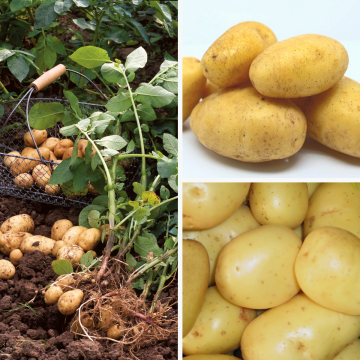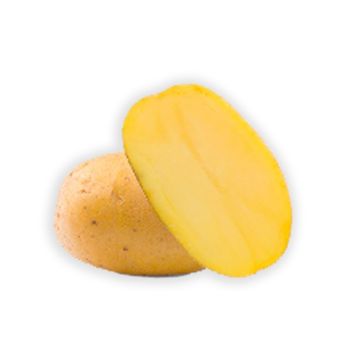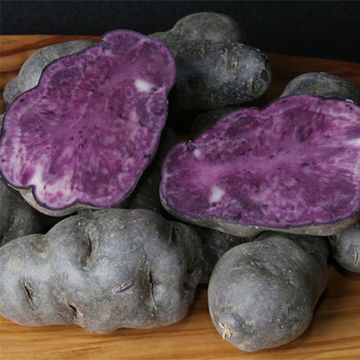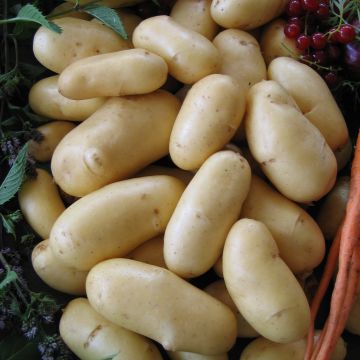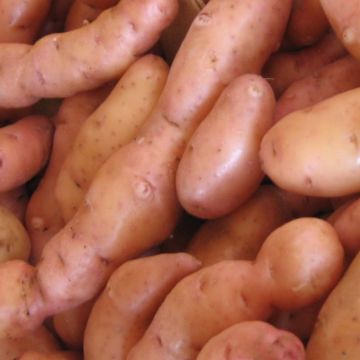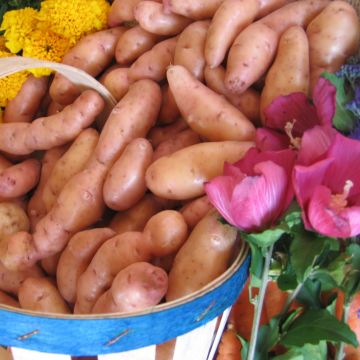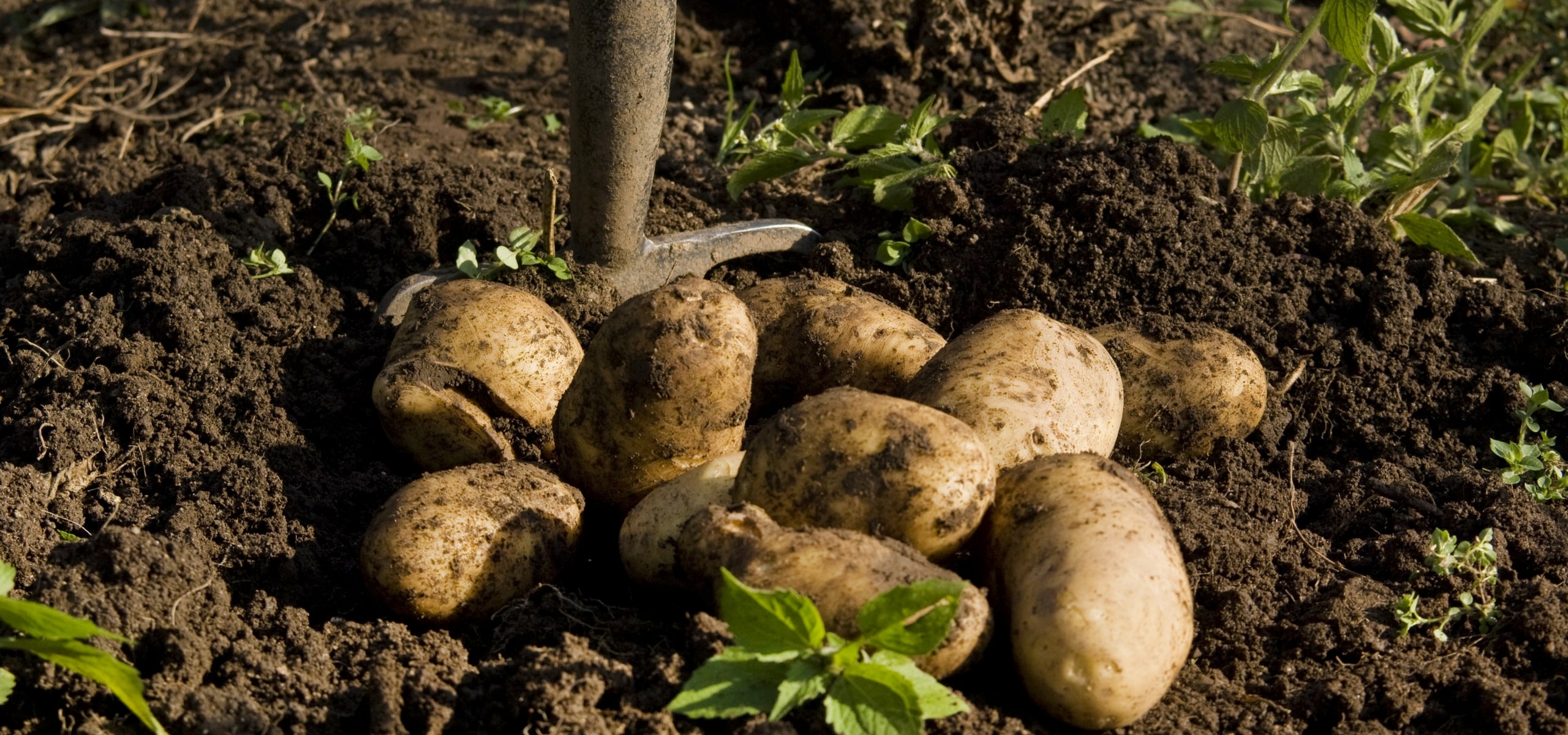
Cultivation, harvest and storage of potatoes
All our tips for successful cultivation
Contents
Potato or Solanum tuberosum is an essential vegetable in the garden! Its edible tubercles lend themselves to numerous recipes: as chips, in mash, in gratins, sautéed or steamed, there are plenty of different ways to enjoy them! Potatoes are quite easy to grow and they provide good yields. If you want to plant some in your garden, discover all our tips for planting, maintaining and harvesting them!
Where to plant potatoes?
Potatoes are grown in the sun in rich, deep soil. Add well-matured compost (at least 3 kg per square metre) in the previous autumn, by scratching it in to a depth of 5 cm, after thoroughly loosening the soil with a spade or a bio-fork.
In the vegetable garden, potatoes pair well with corn, cabbage, and all legumes (Fabaceae) in general: peas, broad beans, beans… However, avoid planting them alongside tomatoes, peppers, and aubergines.
→ Learn all about potatoes in our comprehensive guide.
Read also
Planting potatoWhen to plant them?
Potatoes are planted, previously sprouted, from February under cover (cold greenhouse, tunnel or under forcing fleece) for the “early” varieties and from mid-March to May for other varieties, when the soil temperature reaches 10 °C.
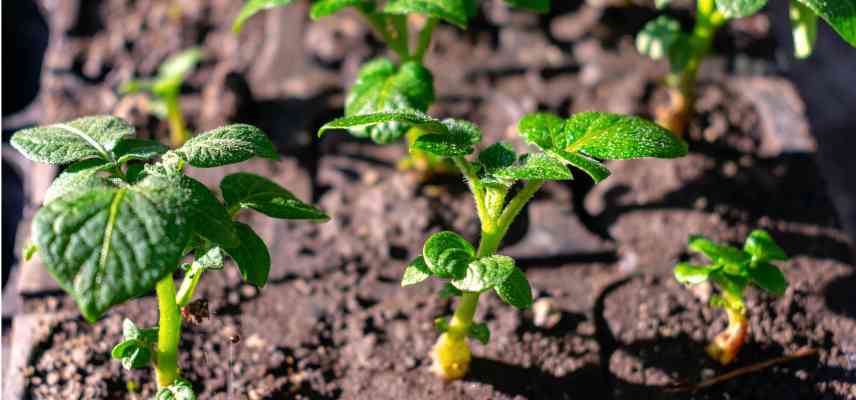
Discover other Seed potatoes
View all →Available in 0 sizes
Available in 1 sizes
Available in 0 sizes
Available in 2 sizes
Available in 1 sizes
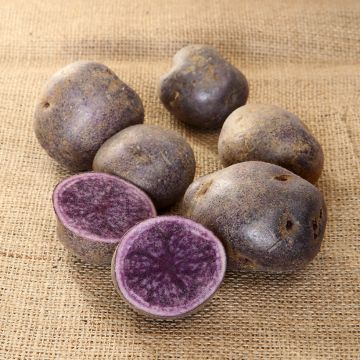
Available in 1 sizes
Available in 3 sizes
Available in 1 sizes
Available in 1 sizes
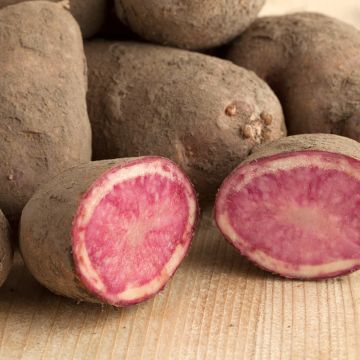
Available in 1 sizes
How to plant them?
There are different techniques for growing potatoes: traditional cultivation with hilling during growth, mulch cultivation, and tower cultivation.
Traditional Technique
- In the autumn before planting, loosen the soil and add compost or well-decomposed manure
- From January onwards, you can start to sprout the potatoes by placing them in trays set up in a bright and cool room.
- In spring, dig furrows spaced 50 to 70 cm apart.
- Place the sprouted potatoes in it, 10 cm deep, spaced about 40 cm apart.
- Cover them with soil and water generously.
- Two weeks later, you can start to mound the stems by bringing soil up to form a ridge.
- You can mound them again one or two times during their growth. Discover our advice sheet: When and how to mound potatoes?
Mulch Cultivation
Planting under mulch involves placing the tubers on the soil and covering them, as they grow, with a thick layer of mulch to protect them from light. Also discover how to grow potatoes on grass and our video Growing potatoes under mulch.
- Start by sprouting the potatoes.
- In spring, mow the short grass meadow in the location where you want to plant the potatoes.
- Then simply place them on the short grass meadow, spacing them about 40 cm apart.
- Cover them with some garden soil mixed with compost.
- Place a layer of dry mulch on top (straw, dry grass, dead leaves, wood chips…) about 15 cm thick.
- Water.
Tower Planting
This technique allows potatoes to be grown vertically, making it possible to cultivate them in small spaces, such as a terrace, an inner courtyard, or a small garden.
- Sprout the potatoes.
- Take a large plastic bag, tall enough, and pierce a few holes in the bottom. This technique can also be done in a wooden box or in a mesh cylinder.
- Place 5 to 10 cm of well-decomposed compost in the bag
- Place a sprouted potato in it
- Cover it with compost and water.
- As soon as the plant reaches about 10 cm in height, add a new layer of compost
- Repeat the process several times, following the growth of the plant but without covering its last leaves.
- Remember to water regularly.
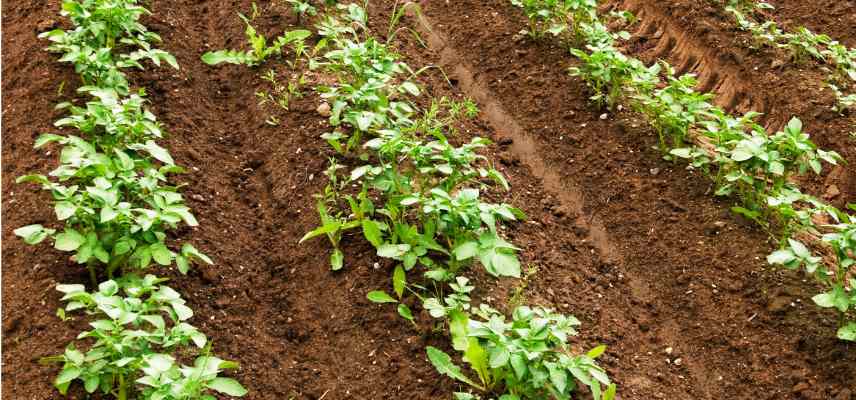
What are the diseases and pests?
The Colorado beetle is the main pest of the potato. In case of an infestation, collect them manually, destroy them, and spray a natural insecticidal based on pyrethrum. A sowing of flax could also help keep them at bay.
The most common disease is downy mildew, caused by a fungus and can be prevented by:
- properly respecting planting distances,
- practising good crop rotation: potatoes should not be grown in the same plot for at least 5 years,
- using varieties known to be resistant, such as ‘Bernadette’.
As a preventive and curative measure, spray a solution of Bordeaux mixture (2 grams per litre of water) and repeat the treatment after each rainy episode.
When to harvest potatoes?
Yellowing of the foliage is a sign that the potatoes are ready to be harvested, except for the “early” varieties which are harvested before full ripeness, when the flowers fade.
Harvesting should be done in dry weather and when rain is not expected for several days. To do this:
- Gently lift the plants using a rake, a special potato harvesting spade, or a fork with blunt tines, to avoid damaging the tubercles,
- Allow them to dry for one to two days in the sun to ensure optimal storage.
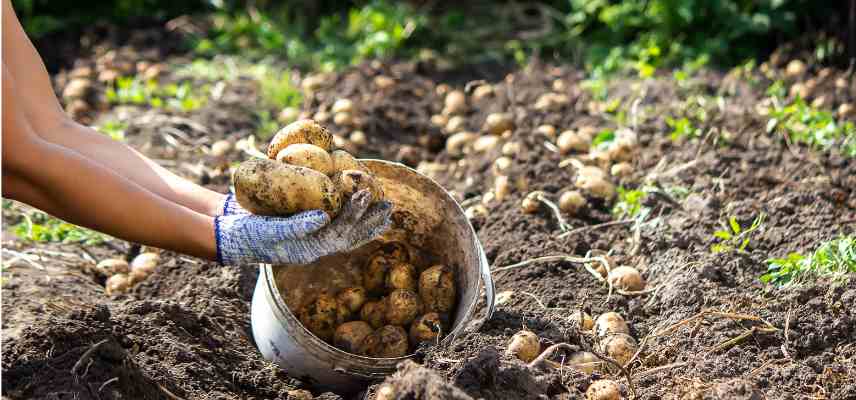
How to preserve them?
To ensure that potatoes can be stored for several months, it is advisable to:
- Choose a suitable variety such as ‘Désirée’, ‘Manon’, ‘Samba’, or ‘Nicola’,
- Store them in a jute sack or large wooden crate, in a cool, dry, well-ventilated, and dark place (cellar or garage without windows).
In order to avoid using chemical sprout inhibitors, it is sometimes necessary to perform chitting during storage.
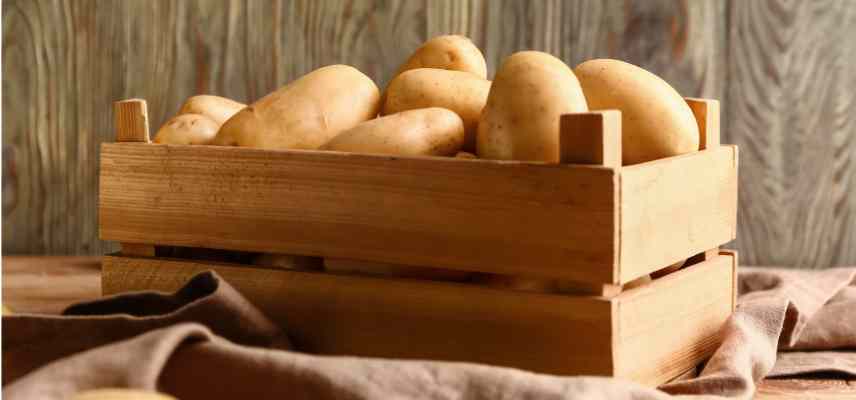
- Subscribe!
- Contents

































